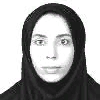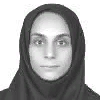International Journal of Modern Education and Computer Science (IJMECS)
IJMECS Vol. 4, No. 4, 8 Apr. 2012
Cover page and Table of Contents: PDF (size: 278KB)
Radial Basis Function and K-Nearest Neighbor Classifiers for Studying Heart Rate Signals during Meditation
Full Text (PDF, 278KB), PP.43-49
Views: 0 Downloads: 0
Author(s)
Index Terms
Frequency Indices, Heart Rate Signals, K-Nearest Neighbor, Meditation, Radial Basis Functions
Abstract
Meditation refers to a family of self-regulation practices that focus on training attention and awareness in order to bring mental processes under greater voluntary control. The aim of this study is to evaluate the efficiency of two different classifiers, k-Nearest Neighbor (k-NN) and Radial Basis Function (RBF), on the heart rate signals in a specific psychological state. For this purpose, two types of heart rate time series (before, and during meditation) of 25 healthy women are collected in the meditation clinic in Mashhad. The spectral parameters are used to gain insight into the autonomic nervous system (ANS) response induced by meditation. Therefore, very low frequency, low frequency, high frequency, the LF/HF ratio and frequency of the highest spectral peak of heart rate signals are extracted and used as inputs of the classifiers. To evaluate performance of the classifiers, the classification accuracies and mean square error (MSE) of the classifiers were examined. The classification results of this study denote that the RBF classifier trained on spectral features obtains higher accuracy than that of k-NN classifier. The total classification accuracy of the RBF classifier is 92.3% with 0.026 classification error. However, k-Nearest Neighbor classifier gives encouraging results (86.5%). Experimental results verify that radial basis function is an efficient classifier for classifying heart rate signals in a specific psychological state.
Cite This Paper
Ateke Goshvarpour, Atefeh Goshvarpour, "Radial Basis Function and K-Nearest Neighbor Classifiers for Studying Heart Rate Signals during Meditation", International Journal of Modern Education and Computer Science (IJMECS), vol.4, no.4, pp.43-49, 2012. DOI:10.5815/ijmecs.2012.04.06
Reference
[1]Walsh R, Shapiro SL. (2006). The meeting of meditative disciplines and Western psychology: a mutually enriching dialogue. Am Psychol, 61(3), 227–239.
[2]Tang YY, Ma Y, Wang J, Fan Y, Feng S, Lu Q, et al. (2007). Short–term meditation training improves attention and self–regulation. Proceeding of the National Academy of Science USA, 104, 17152−17156.
[3]Matousek RH, Dobkin PL, Pruessner J. (2010). Cortisol as a marker for improvement in mindfulness–based stress reduction, Complementary Therapies in Clinical Practice, 16, 13–19.
[4]Grossman P, Niemann L, Schmidt S, et al. (2004). Mindfulness–based stress reduction and health benefits: a meta–analysis. J Psychosom Res, 57(1), 35–43.
[5]Shapiro SL, Astin J, Bishop S, Cordova M. (2005). Mindfulness–based stress reduction for health care professionals: Results from a randomized trial. International Journal of Stress Management, 12(2), 164–176.
[6]Goshvarpour A., Goshvarpour A., Rahati S. (2011). Analysis of lagged Poincare plots in heart rate signals during meditation, Digital Signal Processing, 21, 208-214.
[7]Maestri R, Rovere MT La, Porta A, Pinna GD. (2008). Sympathetic Neurohormonal Correlates of Linear and Symbolic Dynamics Heart Rate Variability Indexes in Chronic Heart Failure, Computers in Cardiology, 35, 49−52.
[8]Vandeput S., Verheyden B., Aubert A.E., Huffel S.V. (2008). Nonlinear heart rate variability in a healthy population: influence of age, Computers in Cardiology, 35, 53-56.
[9]Goshvarpour A., Goshvarpour A. (2012). Chaotic Behavior of Heart Rate Signals during Chi and Kundalini Meditation. I.J. Image, Graphics and Signal Processing, 2, 23-29.
[10]Goshvarpour A., Goshvarpour A. (2012). Recurrence Plots of Heart Rate Signals during Meditation, I.J. Image, Graphics and Signal Processing, 2, 44-50.
[11]Lehrer P, Sasaki Y, Saito Y. (1999). Zazen and cardiac variability, Psychosomatic Medicine, 61, 812–821.
[12]Berntson GG, Bigger JT Jr, Eckberg DL, Grossman P, Kaufmann PG, Malik M, Nagaraja HN, Porges SW, Saul JP, Stone PH, van der Molen MW. (1997). Heart rate variability: origins, methods, and interpretive caveats. Psychophysiology, 34, 623–648.
[13]Task Force of the European Society of Cardiology and the North American Society of Pacing and Electrophysiology. (1996). Heart rate variability: standards of measurement, physiological interpretation, and clinical use. Circulation, 93, 1043–65.
[14]Porges SW, Bohrer RE. (1990). Analysis of periodic processes in psychophysiological research. In: Caccioppo JT, Tassinary LG, editors. Principles of psychophysiology: physical, social, and inferential elements. Cambridge: Cambridge University Press, 708–753.
[15]Berntson GG, Caccioppo JT, Quigley KS. (1993). Respiratory sinus arrhythmia: autonomic origins, physiological mechanisms, and psychophysiological implications. Psychophysiology, 30, 183–96.
[16]Porges SW. (1992). Vagal tone: physiologic marker of stress ulnerability. Pediatrics, 90, 498–504.
[17]Malliani, A., M. Pagani, F. Lombardi, and S. Cerutti. (1991). Cardiovascular neural regulation explored in the frequency domain. Circulation 84, 482–492.
[18]Bernardi L, Leuzzi S, Radaelli A, Passino C, Johnston JA, Sleight P. (1994). Low frequency spontaneous fluctuations of R-R interval and blood pressure in conscious humans: a baroreceptor or central phenomenon? Clin Sci, 87, 647–54.
[19]Takahashi T, Murata T, Hamada T, Omori M, Kosaka H, Kikuchi M, Yoshida H, Wada Y. (2005). Changes in EEG and autonomic nervous activity during meditation and their association with personality traits, International Journal of Psychophysiology, 55, 199–207.
[20]Taylor JA, Carr DL, Meyers CW, Eckberg DL. (1998). Mechanisms underlying very-low-frequency RR-interval oscillations in humans. Circulation, 98, 547–55.
[21]Goshvarpour A., Rahati S., Saadatian V. (2010). Estimating depth of meditation using electroencephalogram and heart rate signals [MSc. Thesis] Department of Biomedical Engineering, Islamic Azad University, Mashhad Branch, Iran. [Persian]
[22]Goshvarpour A., Rahati S., Saadatian V. (2010). Analysis of electroencephalogram and heart rate signals during meditation using Hopfield neural network [MSc. Thesis] Department of Biomedical Engineering, Islamic Azad University, Mashhad Branch, Iran. [Persian]
[23]Cerutti S, Biachi AM, Mainardi LT. (1995). Spectral analysis of the heart rate variability signal. In: Malik M, Camm AJ, editors. Heart rate variability, New York: Futura, 63–74.
[24]Bremner D., Demaine E., Erickson J., Iacono J., Langerman S., Morin P., Toussaint G. (2005). Outputsensitive algorithms for computing nearest-neighbor decision boundaries. Discrete and Computational Geometry, 33(4), 593–604.
[25]Cover T.M., Hart P.E. (1967). Nearest neighbor pattern classification, IEEE Transactions on Information Theory, 13(1), 21–27.
[26]Toussaint G.T. (2005). Geometric proximity graphs for improving nearest neighbor methods in instance-based learning and data mining. International Journal of Computational Geometry and Applications, 15(2), 101–150.
[27]Powell, M.J.D. (1987). Radial basis functions for multivariable interpolation: a review. In J.C.Mason and M.G. Cox, eds, Algorithms for Approximation, 143–167. Clarendon Press, Oxford.
[28]Lowe, D. (1995). Radial basis function networks. In M.A. Arbib, ed., The Handbook of Brain Theory and Neural Networks, 779–782. MIT Press, Cambridge, MA.
[29]Broomhead, D.S. and Lowe, D. (1988). Multi-variable functional interpolation and adaptive networks. Complex Systems, 2(3), 269–303.
[30]M. Andrew R. Webb . QinetiQ Ltd., UK, (2002). Statistical Pattern Recognition. England,.
[31]Goshvarpour A., Goshvarpour A., and Rahati S. Analysis of heart rate signals during meditation. (2010). The 2nd National Electrical Engineering Conference, Najafabad Branch of IAU. [Persian]

